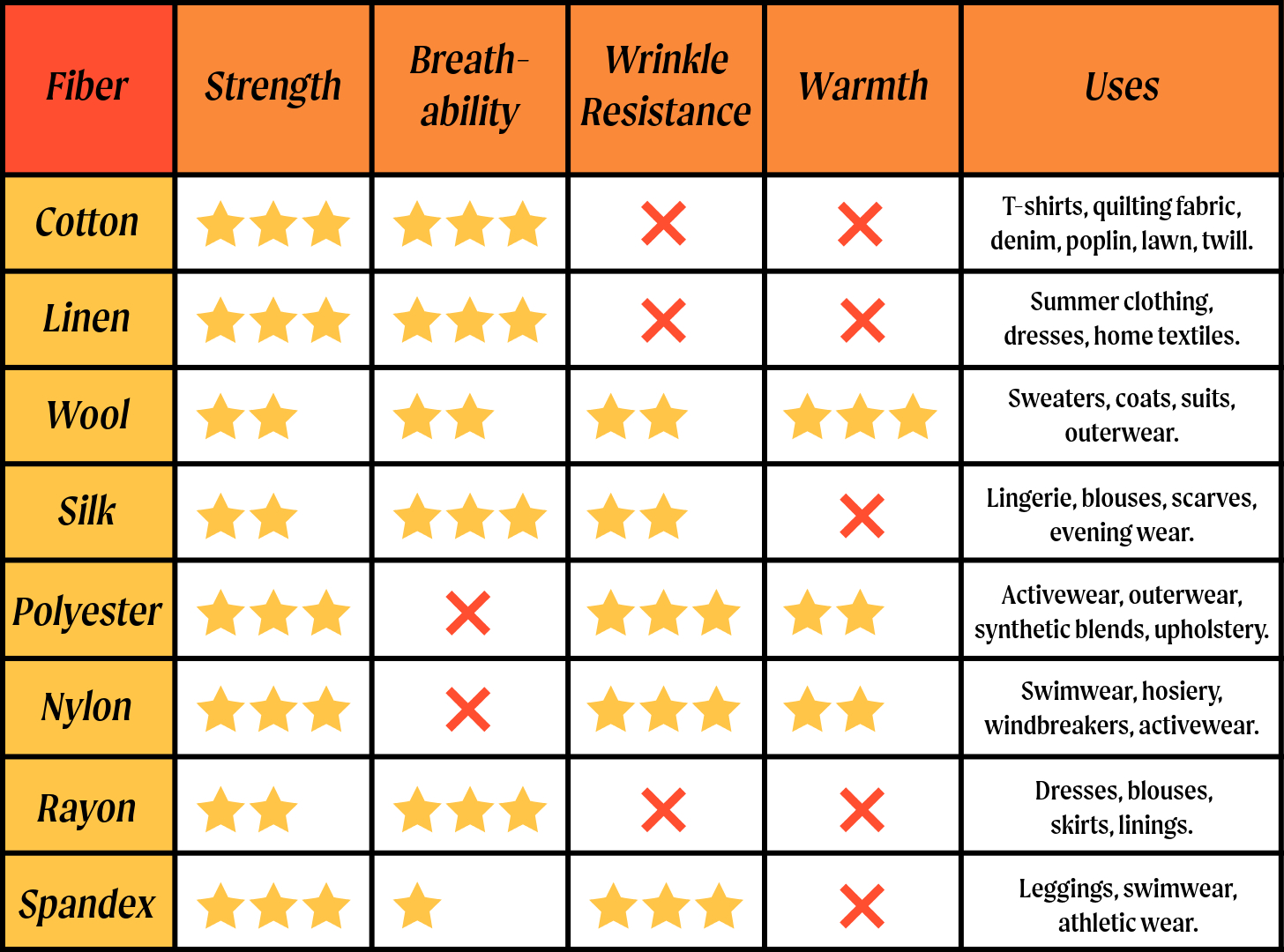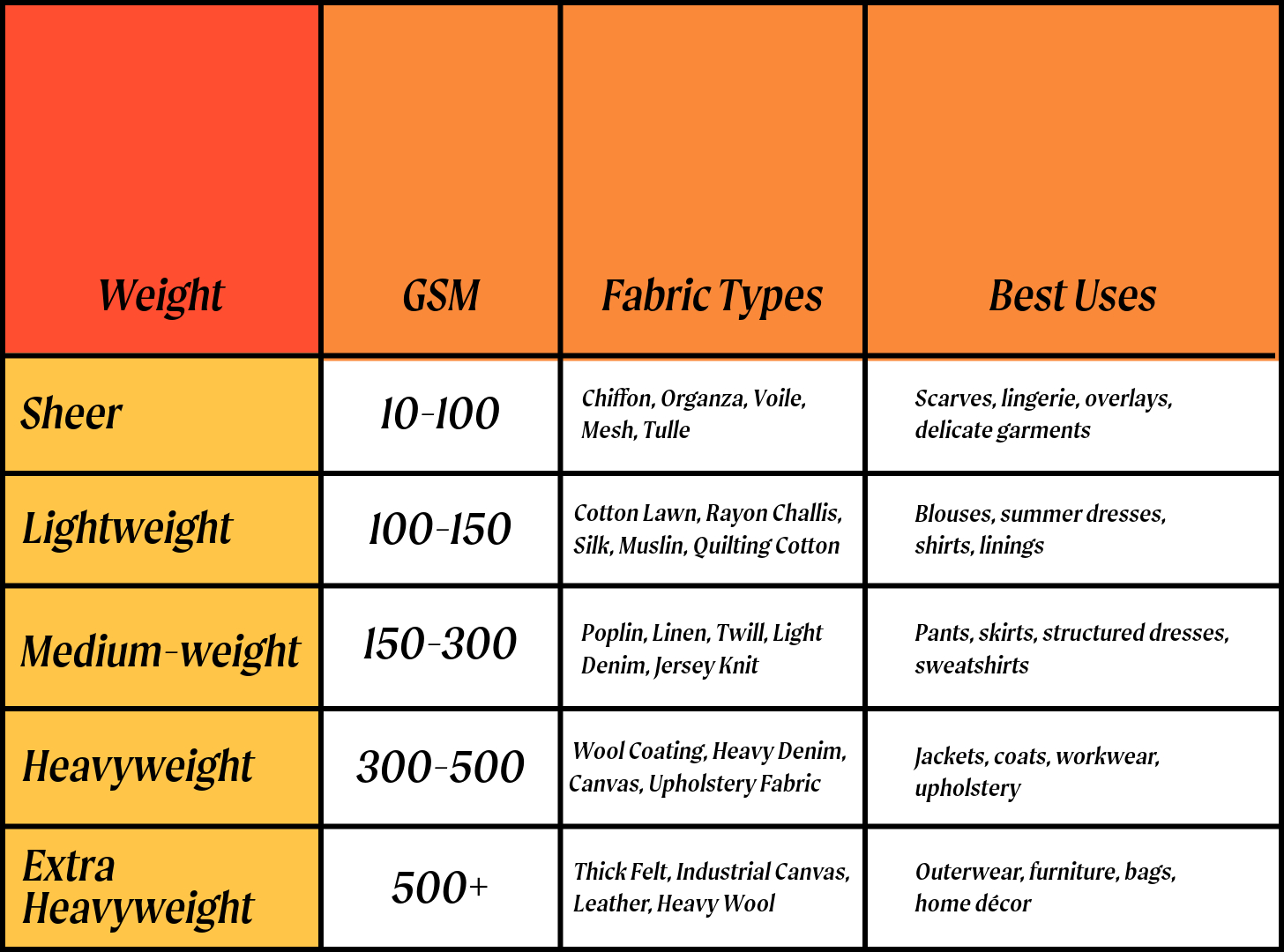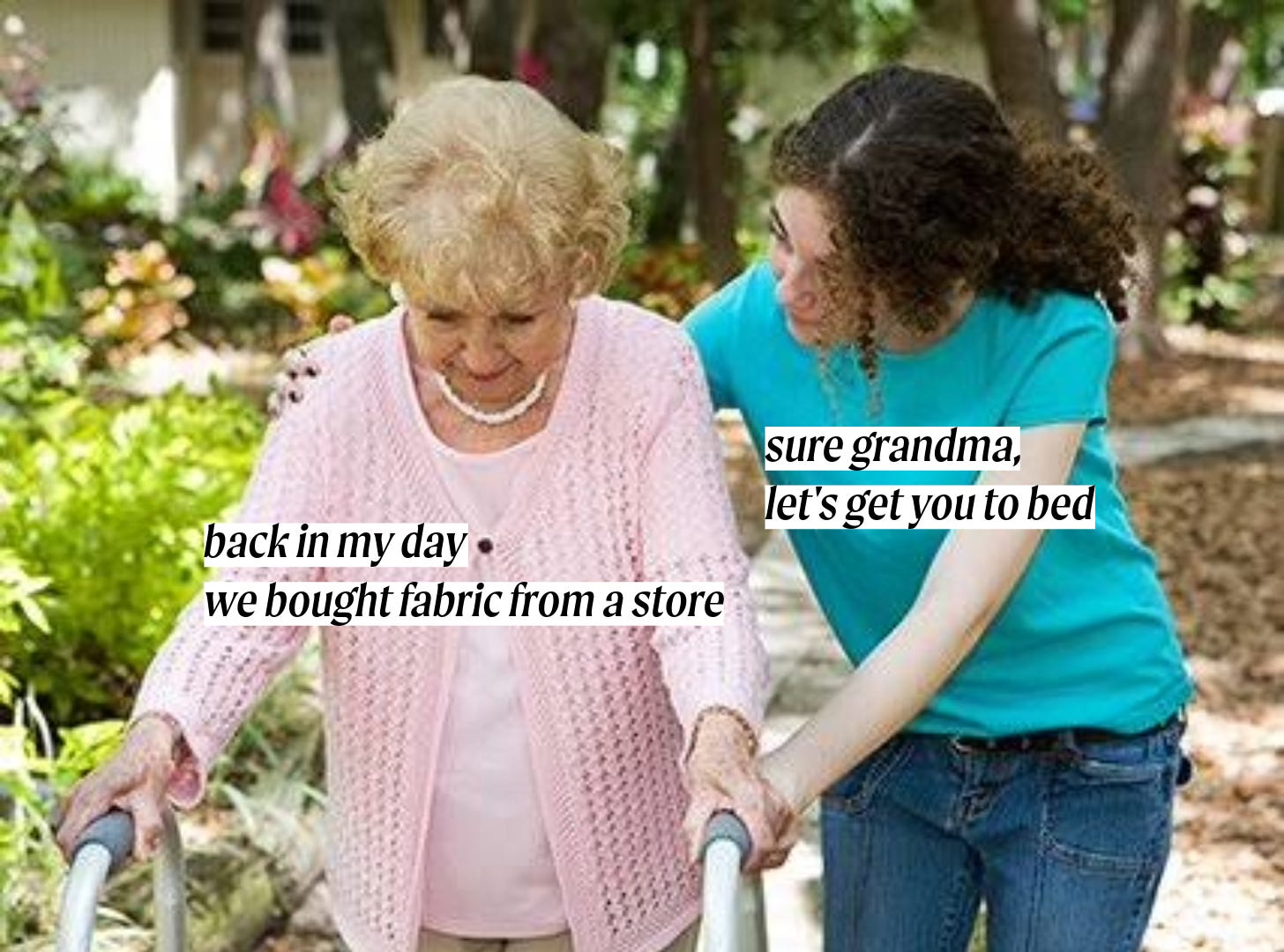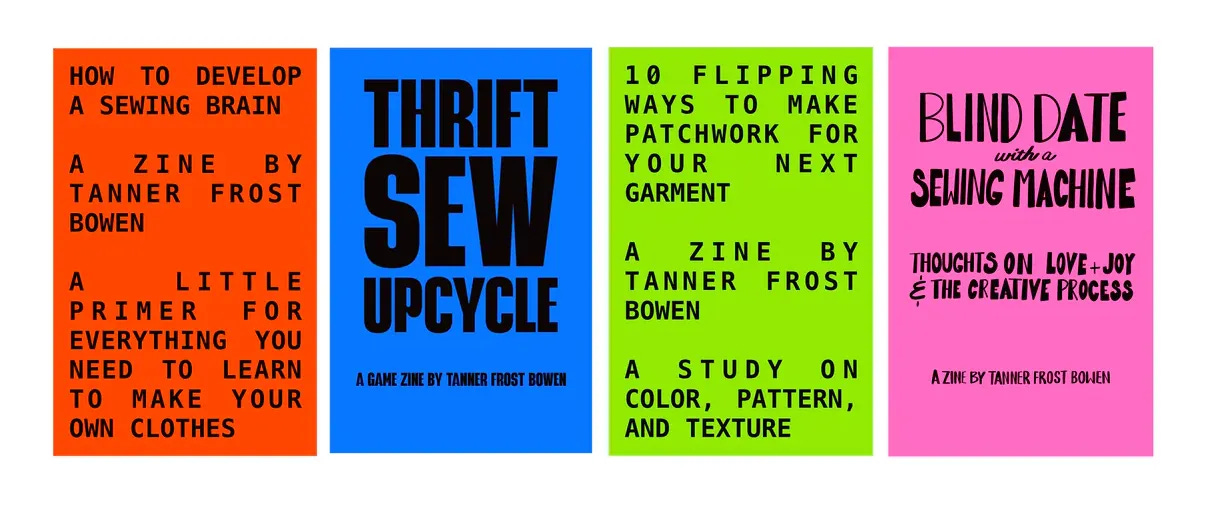Fabric buying has traditionally been a tactile experience. You need to see it. You need to touch it. You might even need to smell it. But how do you have this experience when big stores like JOANN are closing up shop? Where do you spend your money now? How do you even buy fabric online without grabbing hold of it? My goal is to equip you with the knowledge to effectively purchase fabric from online shops and small businesses by examining the main characteristics of fabric. Knowing the right vocabulary is crucial to bringing the hands-on experience with you no matter where you make your purchase.
The 8 Truths of Fabric
There are eight concepts that you need to understand in order to effectively buy fabric online: Fiber Content, Weave Type, Weight, Stretch, Drape, Opacity, Finish/Texture, and Width. I know this can seem like a lot of information, but let’s examine each of these characteristics one-by-one. This is a great opportunity to lock in and add a skill to your Sewing Brain!
Fiber Content
Fabric is made up of either natural or synthetic fibers. Generally speaking, natural fibers tend to be more comfortable, while synthetic fibers tend to be more durable. Natural fibers are either plant or animal based and consist of cotton, linen, wool, and silk, among others. Synthetic fibers are made from a chemical process and the common types are polyester, nylon, spandex, and rayon (semi-synthetic). However, remember that modern fabric is often a blend of both natural and synthetic fibers. For example, when cotton is blended with polyester, it results in a more durable and wrinkle-resistant fiber than cotton alone. Consult the chart below to get a better understanding of how these fibers compare against each other.
Weave Type
When buying fabric, you will come on across different weave types that are used as descriptors. Essentially, this is just more information about how the fabric is made, or woven together. The most basic type is a plain weave, where one thread goes over and one thread goes under, almost creating a checkerboard pattern of sorts. Depending on the thread size this can be seen in different fabrics from lightweight cotton poplin dress shirts to heavy-duty canvas tote bags. Also, muslin fabric, which can be used to make practice garments, has a loose plain weave.
A basket weave is really similar to a plain weave, but instead of using one thread, multiple threads are used to make the over and under pattern. It is less structured than a traditional cotton and is commonly used for oxford cloth dress shirts.
Another common weave type is the twill weave, where two or more threads go over and one thread goes under. As you might guess, this makes a stronger fabric than a plain weave alone. The twill weave is used to make Denim, which makes sense because we want to be using a stronger fabric for our jackets and pants. Variations on this weave with distinct patterns include Herringbone & Houndstooth.
In a satin weave, several threads pass over top before going under, which means that the resulting fabric is smooth and shiny. This technique can be applied to many different fiber types, including silk, cotton, and polyester. In a leno weave, some of the threads are twisted around each other, resulting in an open structure. You see this weave type in the summer in tops made from gauze or in tulle made from mesh fabric. A pile weave happens when extra threads are woven into the fabric. This creates the texture seen in velvet or corduroy.
Fabric Weight
A common descriptor of fabric when shopping online will be the fabric’s GSM, or grams per square meter. If a fabric has a low GSM, then that means it is lighter and more breathable. The higher the GSM, the more structured and durable the fabric. Consult the chart below to examine different types of fabric based on GSM, and their use cases.
You are doing great, sweetie!
You did it! You read through the hardest parts of understanding fabric characteristics. Now, it is time for some simple definitions.
Stretch
Fabric is judged based on its elasticity and either has no stretch (stable), or it can stretch in one direction (2-way stretch), or it can stretch in both directions (4-way stretch).
Drape
The way fabric flows on the body is referred to as drape. Some ways it is classified are Fluid, Crisp, and Structured. Fluid means that it is soft and flowy like silk and rayon fabrics. Crisp drape means that the fabric holds its shape, like organza or taffeta. Structured draps means that the fabric is sturdy and stiff, like denim or canvas.
Opacity
Whether or not a piece of fabric is see-through denotes its opacity. Sheer fabric is transparent, like lace. Semi-sheer fabric is slightly see-through, like organza. Opaque fabric is not see-through, like jersey.
Finish/Texture
Oftentimes, a fabric listing will describe the texture, which may be difficult to see in pictures alone. Below are some terms to keep in mind.
Brushed refers to a fuzzy finish, like flannel fabric.
Mercerized is a type of cotton fabric that is treated for strength and shine.
Prewashed means that the fabric is cleaned to reduce shrinkage.
Matte finishes are dull, as opposed to a Glossy, reflective finish.
Width
It is commonly known that fabric is sold by how long it is, in yards. But you may not know that yardage comes in varying widths. The most common widths for fabric are 45 in, 54 in, or 60 in. It is a good idea to check the width so that you better understand how much fabric you are getting.
Now that you know how to buy, let’s shop!!
Thanks to everyone who replied to my Substack chat asking for your favorite places to shop for fabric online! I have summarized your replies below. If you would like to keep up with future data-collecting Garbie chats, then download the app!
Online Retailers
Customer service is helpful!
Eco-friendly fabrics!
A wide selection of Japanese fabrics!
Perfect for Linen!
Mentioned several times for their wide array of fabrics!
Historical fabrics!
Natural fiber fabrics!
Large retailer with a Deadstock section!
They have tons of free sewing patterns as well!
You can sort by fiber content!
Fancy! Mentioned several times
Fancy! Mentioned a lot!
Great resource for second-hand fabrics!
Ethically sourced fabrics.
Online second-hand craft store!
Deadstock fabric, galore!
Online second-hand sewing store!
FABSCRAP is a nonprofit organization that has pioneered a system to recycle and reuse fabric waste from brands!
If you are close to NYC, you can volunteer in exchange for free fabric.
They also do online shopping appointments on larger orders!
Some honorable mentions:
Creative Reuse Centers
search online for one in your area!
Scrap PDX, The Waste Shed in Chicago, Scraps KC, The Scrap Exchange in Durham, NC, ScrapRVA in Richmond, and ScrapB’more in Baltimore were mentioned in the chat!
Whatnot Fabric Shows
Maker Spaces
Etsy
Thrift Stores
especially for sheets and clothing to repurpose!
Small Business Fabric Map: here
A big thanks to whoever is working on this map! It is so cool!
If you enjoyed this resource, check out my digital sewing zine bundle! Sewing Brain has sold 15,000+ copies online!











This is so informative!! Thank you for the handy reference guide. If I can suggest one more place to buy fabric online (especially quilting cottons!): Lamb and Loom fabric. Very nice website and so many beautiful designs.
I’ve shared this so much already! Thank you!!!